In Japan, there’s a flavorful delicacy that has captivated taste buds for generations: Ika no Shiokara. This traditional dish, made from fermented squid, offers a unique combination of salty and tangy flavors that tantalize the palate. From its rich history to its various preparation methods and health benefits, there’s much to discover about this beloved Japanese treat. So, join us as we delve deeper into the world of Ika no Shiokara, exploring its origins, culinary uses, and why it continues to hold a special place in Japanese cuisine.
What is Ika no shiokara?
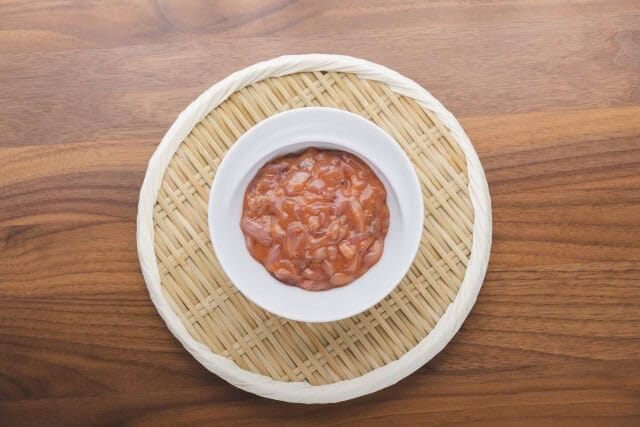
Ika no shiokara is a traditional Japanese dish made from fermented squid. The dish is prepared by salting squid guts and fermenting them for some time, typically several weeks. This fermentation process creates a strong, salty, and tangy flavor that is quite distinctive. Depending on the manufacturing method, there are three types: red, white, and black. Among these, akazukuri is made by adding liver and salt to squid fillet and aging it and is the most common and produced in large quantities. Other products resembling it include shishibishio, crafted from animal meat or poultry, and uobishio, derived from fish. Thus, the manufacturing process bears striking resemblance to fish sauce, making it challenging to discern any notable differences.
Ika no shiokara History
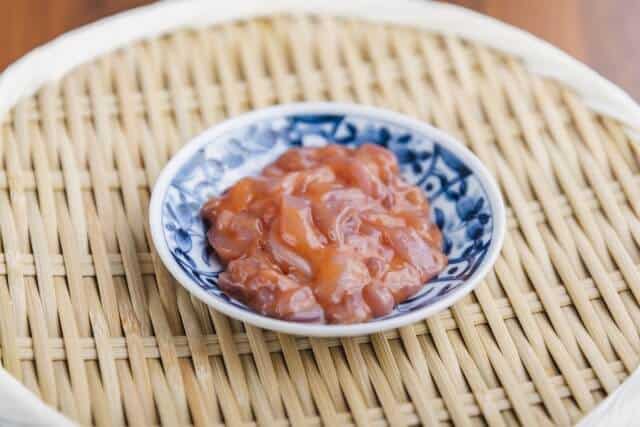
Between 694 and 710, a significant discovery of wooden tablets—essentially wooden tags attached to items kept as taxes by the local government—was made at the ruins in Nara Prefecture. Among them, one tablet bearing the inscription “funadori,” referring to salted crucian carp, marks the earliest recorded mention of salted carp in Japan. Towards the end of the Heian period, the term “shiokara,” as used today, appears in the “Konjaku Monogatari.” However, its continuity with salted fish from the Edo period onward cannot be definitively confirmed, leading to occasional assertions that its earliest documentation may be found in the “Japanese-Potato Dictionary.”
Over time, it began to be paired with “nashimono,” a term recorded since the 16th century. It evolved into the established term “shiokara” during the latter half of the mid-Edo period. Moreover, in Okinawa Prefecture, it is referred to in the local dialect as “~garasu,” reflecting its method of spicing with salt.
Health information of Ika no shiokara
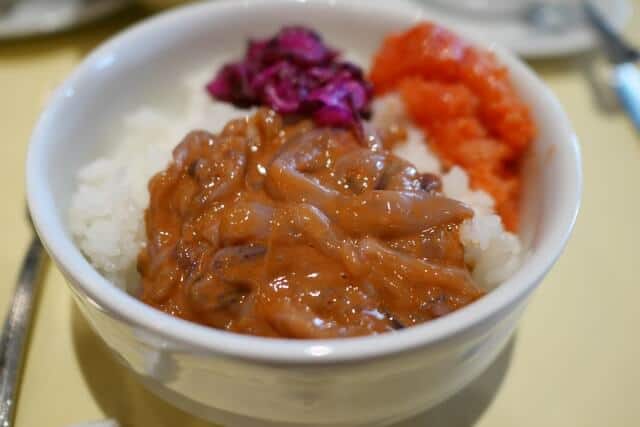
Shiokara is a preserved delicacy crafted by salting the flesh and internal organs of various seafood, followed by fermentation with naturally occurring yeast. Renowned for its high nutritional value, it boasts an array of essential nutrients such as amino acids, responsible for its distinctive flavor, along with zinc and vitamin A. Notably, salted squid is rich in taurine and collagen, both known for their health benefits.
There are three primary types of salted squid distinguished by their manufacturing techniques: red, white, and black. The conventional method involves slicing the squid with its skin intact, then adding liver and salt to the fillet before aging it. Alternatively, shirosukuri entails removing the skin and liver, rendering it suitable for sashimi, followed by pickling with salt and chili pepper. When squid ink is incorporated, it transforms into black salted fish known as Kurozukuri. In contemporary Japan, the term “salted fish” predominantly refers to salted squid. However, beyond squid, it encompasses a diverse range of seafood including octopus, shrimp, yellowtail, bonito, abalone, sea urchin, salmon, sea cucumber, sea squirt, tuna, mackerel, whitebait, oyster, and turban shell. Hence, prepared from an extensive variety of seafood, including giant clams, tokobushi, and scallops, among others.
How to make arrangements for Ika no shiokara?
Salted squid fried rice
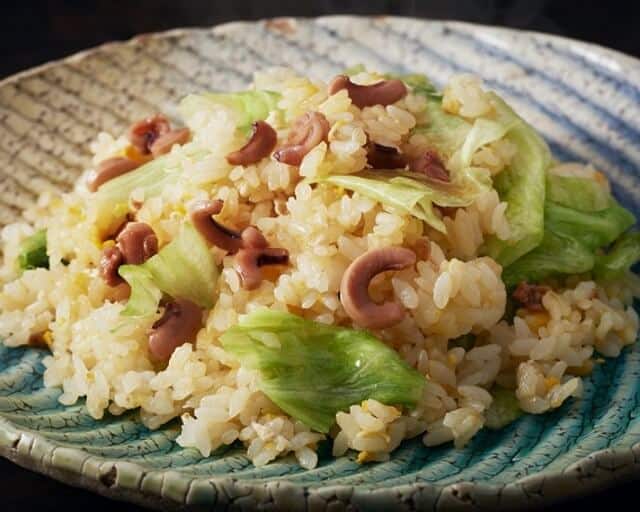
The only ingredients you need to add are lettuce and eggs. The refreshing green of the lettuce and the bright yellow of the eggs are beautiful. We recommend adding them to your lunch box. By slowly frying Shiokara squid with salad oil over low heat, the flavor will blend into the oil and permeate the rice.
Salted squid chazuke
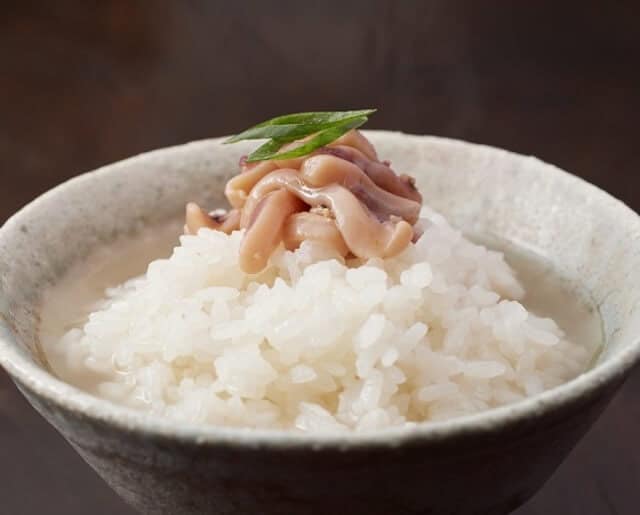
It’s easy to make, just put Shiokara squid on piping hot rice and pour boiling water over it. You can also add mitsuba leaves and green onions if you like. Shiokara squid uses only domestic squid and follows traditional manufacturing methods, so it is characterized by its concentrated flavor. There is no smell of raw cotton, so there is no odor even when you make tea with it.
Pasta with salted squid and cabbage

By using “Shiokara Squid”, you can easily create a sauce that is salty, savory, and rich. Additionally, you can add some quickly boiled cabbage and mix it with the pasta to create a bright-looking main dish.
Differences between Shiokara and Shuto
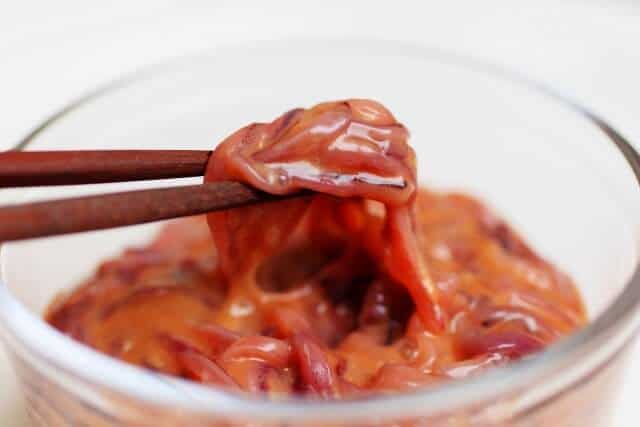
Shiokara and shuto are both traditional Japanese preserved seafood delicacies, yet they diverge in several key aspects. Shiokara typically encompasses a variety of seafood, including squid, octopus, or shrimp. These are salted and fermented to produce a potent, tangy flavor profile. This fermented mixture boasts a strong umami taste and enjoyed in small portions as a side dish or accompaniment to rice or sake. In contrast, shuto specifically refers to a preserved fish product made from the fermented intestines of tuna. Particularly an example of this is the fatty belly section known as toro.
Ika no shiokara FAQ
- How long does Ika no Shiokara last?
Ika no Shiokara has a relatively long shelf life due to its preservation through fermentation and high salt content. When stored properly in an airtight container in the refrigerator, it can typically last for several weeks to a few months. However, it’s essential to consume it within a reasonable time frame to ensure optimal flavor and quality.
- Can you make Ika no Shiokara at home?
Yes, it is possible to make Ika no Shiokara at home, but it requires careful preparation and adherence to proper food safety practices. To make it at home, you will need fresh squid, salt, and possibly additional flavoring ingredients like chili peppers or sake.
Ika no shiokara Recipe
Ika no shiokara Ingredients
| Ingredients for 2 persons | Measurements |
|---|---|
| Surume squid | 40g |
| Salt | 1g |
| Noto salt (deep ocean salt) | 1g |
| Yuzu | 2g |
| Chili pepper | 2g |
How to make Ika no shiokara?
Cut the prepared meat into easy-to-eat sizes. If you lay the squid on a cutting board and let the air out, the squid will be fixed to the cutting board. It will not move easily insert the knife horizontally, and you can cut the squid cleanly.
Rub salt into the cut squid meat. Remove the inside of the squid. The Japanese common squid’s cotton pouch has a long, slender “ink pouch.”
Mix in the chopped squid and squid guts. Depending on the quantity, mix them in a household bowl. Store it in the refrigerator, stir it once or twice a day, and let it get used to it for about a week.
When serving, mix in an appropriate amount of chili pepper and sprinkle with some chopped yuzu for a delicious taste.
Recommended products to buy for Ika no shiokara
President’s Shiokara Kiwami
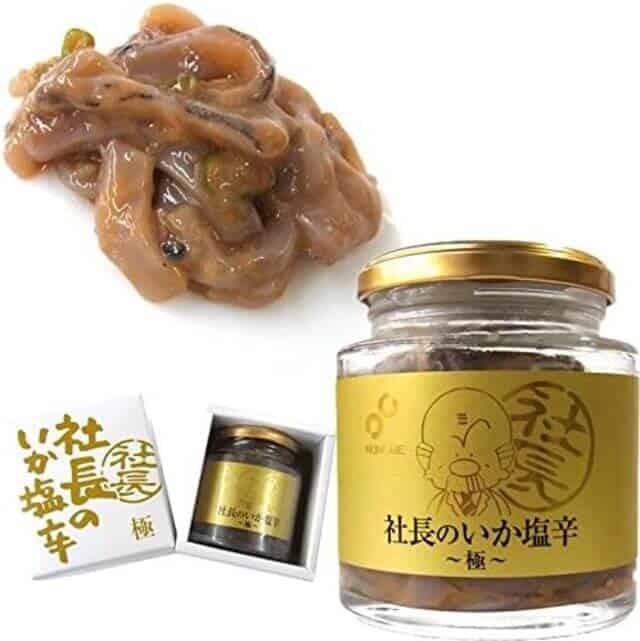
The president of Nunome, a long-established seafood processing company in Hakodate in business for over 80 years. They distributed salted fish as a souvenir, and now it has been commercialized. The thick and fresh Hokkaido-produced red squid (Japanese common squid) has a strong sweetness. The flavor of squid is also strong, and the odor is removed by using Hokkaido-produced green chili pepper as an accent.
Shiino Foods Traditional Salted Squid Bottle
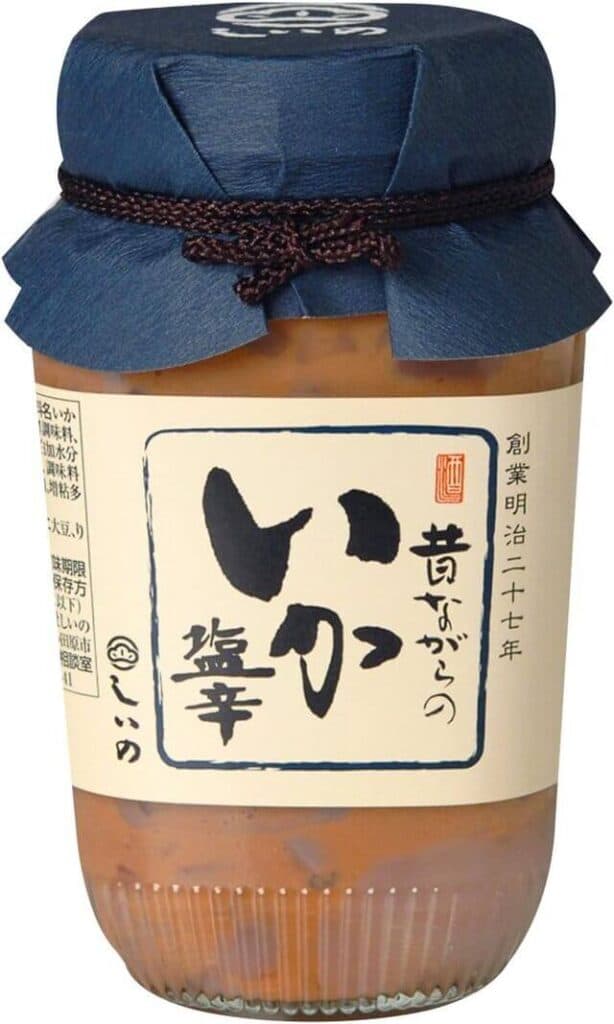
Salted fish is highly nutritious and contains plenty of nutrients such as amino acids, zinc, and vitamin A. These are the source of umami. In addition, the classic squid is rich in taurine, which supports health , and collagen, which supports beauty.
Haza Bussan Old-fashioned rich aged salted fish
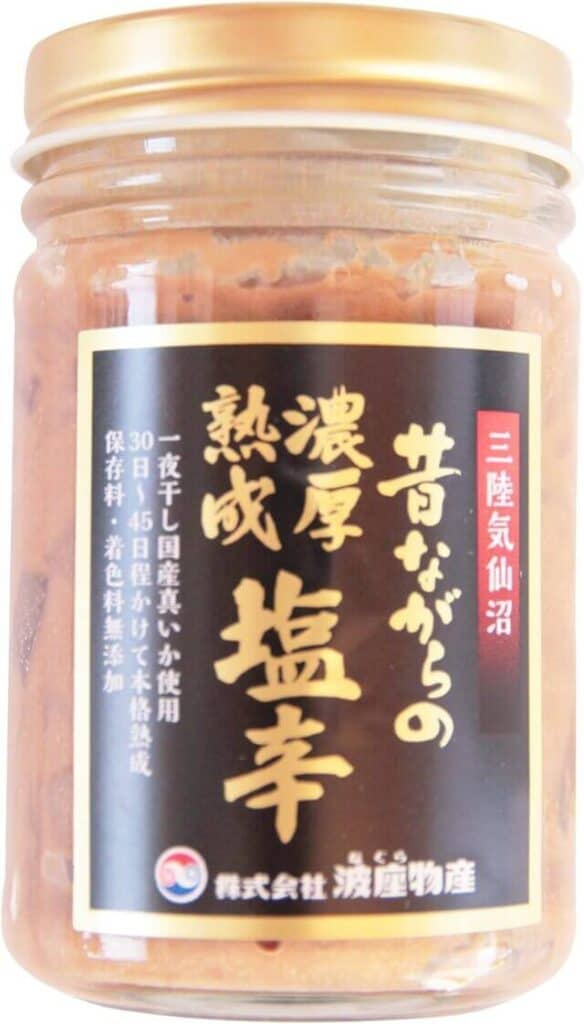
If you want to eat it with rice, we recommend the salted squid, which has a smooth texture. It depends on the type of squid, but some are aged for a long time. Some use only the body part, some have the skin firmly removed, and some are made into salted fish with a soft texture.
Takeaway
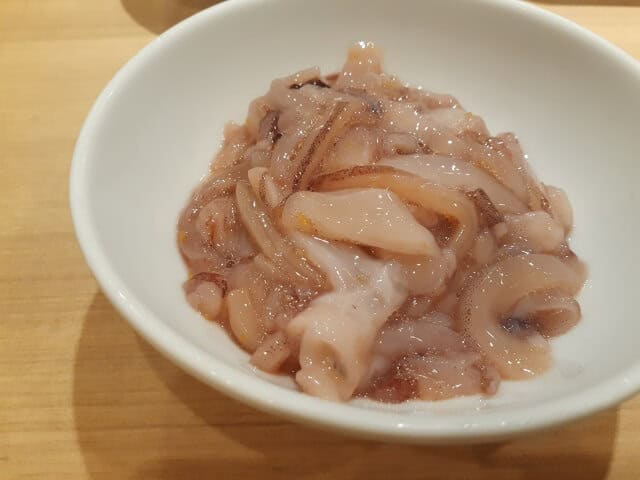
Whether you’re wandering through bustling city streets or serene coastal towns, this traditional dish offers a taste of Japan’s rich cultural heritage. With its bold and savory profile, Ika no Shiokara is sure to leave a lasting impression on your taste buds. So, next time you find yourself in Japan, be sure to seek out this delightful delicacy and savor every salty, tangy bite.
You can check some Japanese unfamiliar dishes that we know you would like to try too.






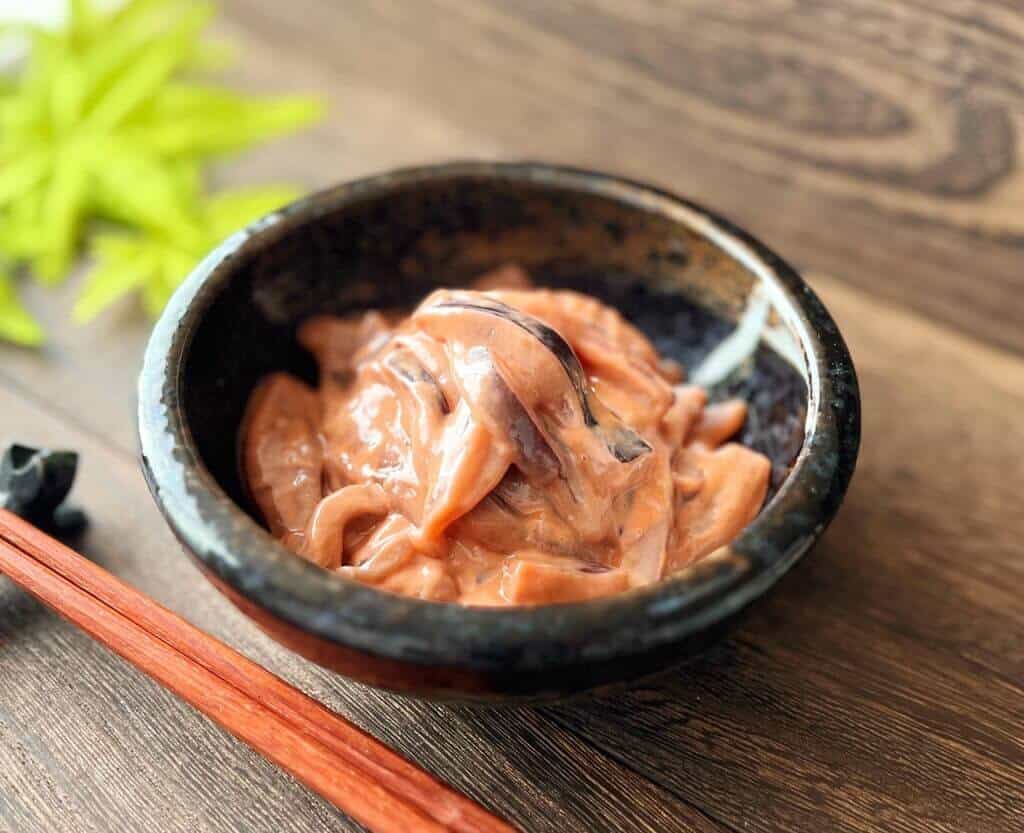
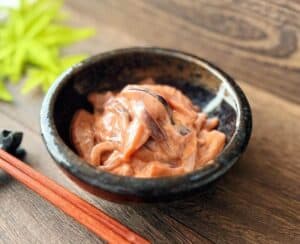
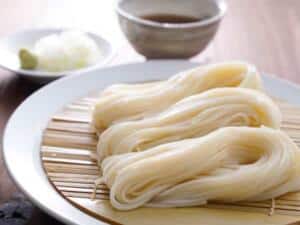
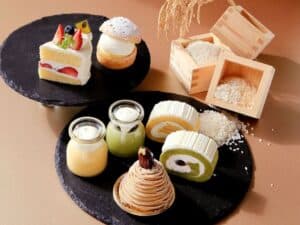

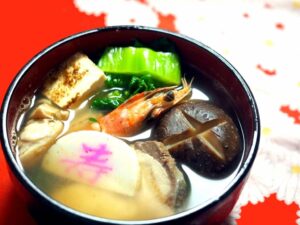
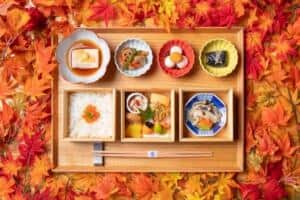
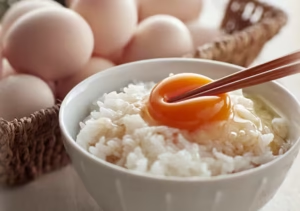
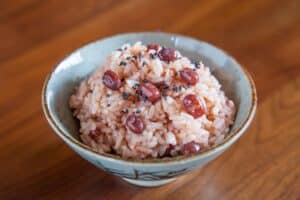
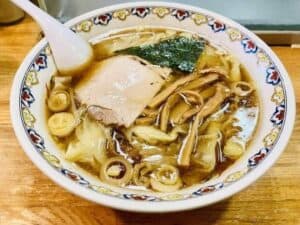
Comments